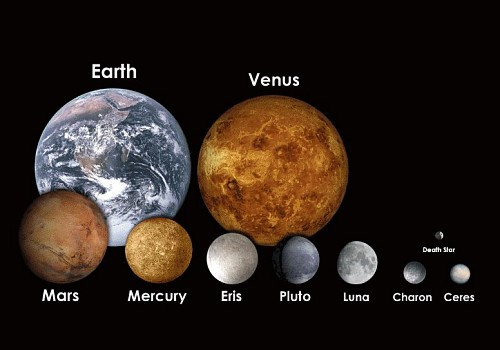
It is enough to look at the sky and you will see
To see it, we do not need any special equipment, just look at the sky and search properly. From our perspective, Jupiter is the fourth brightest object in the sky. Only the Sun, Moon and Venus shine brighter. Moreover, observations about the structure of the planet can be made with an ordinary amateur telescope.
The shortest day in the entire solar system
On Jupiter, a day lasts just 9 hours and 55 minutes, the shortest day of any planet in the solar system. In turn, the year lasting nearly 12 Earth years is much longer there.
Jupiter-Pluto gravity effect
It is an astronomical phenomenon that describes a temporary reduction in gravity on our planet as a result of the conjunction of Jupiter and Pluto. As a result of Pluto hiding behind Jupiter, a huge gravitational force was to arise, reducing the gravity of the Earth. The phenomenon was supposed to occur on April 1, 1976 at 9:47 am. A man bouncing at this hour could begin to levitate.
Sounds incredible? This is what it is. The Jupiter-Pluto gravitational effect is an April Fools’ joke announced on the BBC by Patrick Moore. However, not for everyone. Moments after the announcement of this joke, the phones on the radio rang out. Hundreds of listeners began calling to describe their feelings. At this time of day, many listeners reportedly noticed a decline in gravity. The station received one report that twelve people would suddenly get up from their chairs and fly around the room. Fortunately, Jupiter does not have that much of an impact on life on Earth.
Great Red Spot
This concept was created to describe a phenomenon that has been going on Jupiter continuously for at least 353 years. The Great Red Spot is a huge anticyclone that was first observed by the British Robert Hooke in 1664. The largest hurricane in the solar system has a surface area larger than Earth. Over the last century, its surface area has decreased by as much as half. Whether these changes are normal, or the storm is slowly diminishing, the researchers cannot fully determine. However, there are opinions that the hurricane may completely disappear in the next 20 years.
The largest planet of the solar system

Jupiter is the heaviest planet known to us. Moreover, the mass of this planet is more than 70 percent of the total mass of all planets in the solar system.
Jupiter’s rings
Like Uranus and Neptune, Jupiter is surrounded by rings. In this case, they are composed of three segments. The ring called “halo” is the closest to the planet, further away the planet is surrounded by the main ring, and the openwork ring is furthest away. They mainly consist of dust from meteorite impacts on the planet’s many moons. The rings of this planet, however, are not as clearly visible as those surrounding Saturn.
How many moons does Jupiter have?
Jupiter has the largest number of moons of any planet in the solar system. There are a total of 79 of them, but 10 of them are considered lost. Four of them were discovered on January 7, 1910 by Galileo, hence their name “Moons of Galilee”. In order of distance from the planet, they are Io, Europa, Ganymede, and Calisto. The third of them – Ganymede – is the largest moon in the Solar System, its diameter is even larger than Mercury. Moreover, it is the only known moon with an atmosphere and a magnetosphere.
Extreme weather conditions
Extreme weather conditions prevail on Jupiter. The planet is characterized by severe storms, tremendous pressure, and a wide temperature range. The surface temperature is around -160 degrees Celsius, but in the upper atmosphere the temperature can be as high as 700 degrees Celsius.
Every year it gets smaller
Every year the planet shrinks by 2 centimeters. Comparing to the times when it was created, it has doubled.
Jupiter is Japanese Thursday
Each day of the week in Japanese means the name of the celestial body. The first day of the week is the Moon, Tuesday Mars, Wednesday Mercury, Thursday Jupiter, Friday Venus, Saturday Saturn, and the last day of the week is the Sun.
**INTERESTING FACTS**
- Jupiter is the largest planet of our Solar system
- Jupiter is surrounded by 79 moons.
- Jupiter has colored stripes. They are visible as light zones and dark stripes. These colored stripes come from the strong east-westerly winds that travel upwards of the planet at 640 kilometers per hour.
- Although Jupiter is named after the king of the Roman gods, the Greeks knew him as Zeus, the god of thunder. The Germanic tribes called the planet simply: Thor.
- The volume of Jupiter is so large that it would contain more than 1,321 Earths.
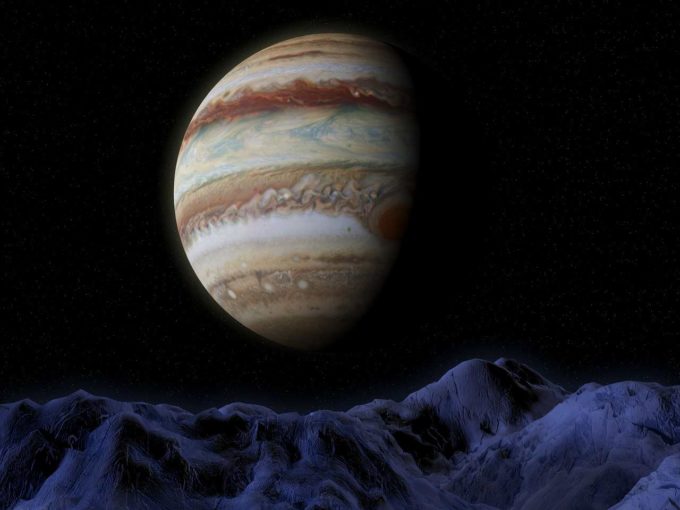
- Although Jupiter is the largest planet in the solar system, it is getting smaller every year. Scientists have found that it shrinks by 2 centimeters in the course. It is estimated that it has already doubled since its inception.
- Like Mercury, Venus, Mars and Saturn, the planet can be easily seen with the naked eye.
- There are two planets in the solar system with diamond rain, Saturn, and Jupiter.
- Jupiter’s shape does not resemble a sphere. Jupiter and Saturn are the two largest planets in the solar system that are not spherical.
- More than 4.6 billion years ago, when the solar system was formed, the planet was much closer to the sun (the present location of Mars).
- Adding up the weight of all the planets in the solar system, they will still be lighter than Jupiter.
- Jupiter’s mass is 2.5 times that of all the other planets in the solar system.
- The mass of this planet is 1/1000 the mass of the sun.
- Jupiter is 7% wider at its equator compared to its latitude at the poles. This is due to the extreme rotation speed that causes the planet to bulge.
- Jupiter’s core is massive and dense. Its composition is uncertain. The core is surrounded by a layer of liquid metallic hydrogen with a high helium content.
- Jupiter is first mentioned in mythology. The Babylonian astronomers were to observe this planet.
- The planet was named by the Romans after one of the most important deities of their mythology, i.e., Jupiter – the supreme ruler of heaven and earth.
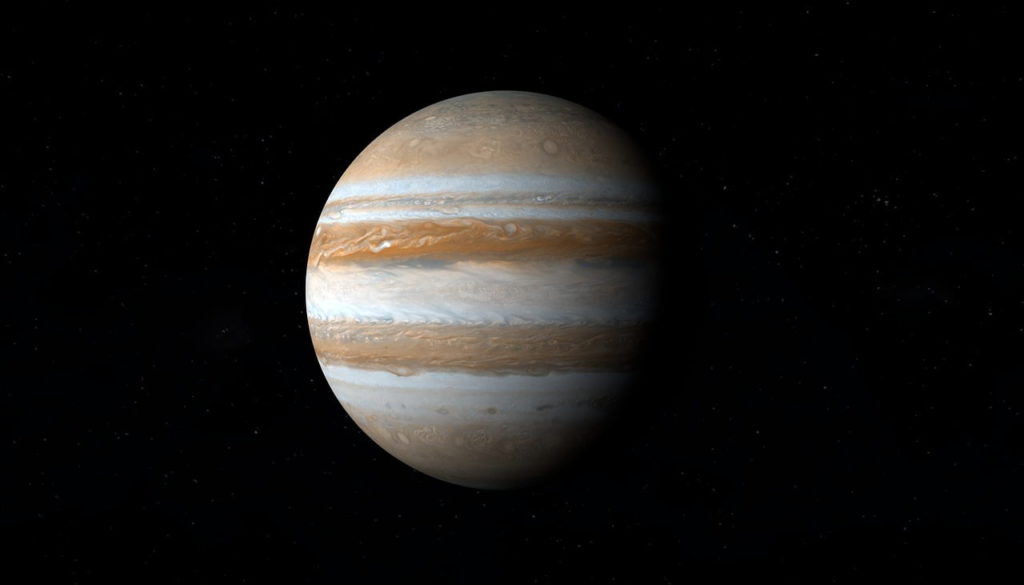
- The first satellite to take pictures of Jupiter during the flyby was the American spacecraft Pioneer 10. The mission took place in 1973 and resulted in obtaining photos of both Jupiter and some of its moons.
- Jupiter is 318 times the size of Earth.
- Jupiter consists of 3/4 hydrogen and 1/4 helium.
- The largest moon, Ganymede, is larger than the planet Mercury.
- Jupiter’s atmosphere is 5,000 km high.
- The wind on Jupiter blows at a speed of 360 km / h.
- Jupiter’s magnetic field is 14 times stronger than that of the Earth’s.
- The four largest moons of the planet are called “Galilean moons” in honor of their discoverer. Each of them has a diameter greater than 3,000 km. These moons are: Ganymede, Io, Europa, and Calisto.

- There are rains of diamonds on Jupiter.
- Jupiter’s diameter is reduced by 2cm per year. It is estimated that when it was created it had a diameter twice as large as it is today.
- Jupiter is not spherical; it is flattened in a 10 to 9 ratio.
- On Jupiter’s moon Io, the largest volcanic eruption was recorded, covering an area over 400 km in diameter.
- Jupiter’s mass is greater than that of any other planet in the solar system.
- In Japanese, the day of the week “Thursday” means the name of the planet Jupiter.
- The four largest moons of Jupiter were discovered in 1610 by Galileo.
- Jupiter’s diameter is 139,822 km. …

- Jupiter orbits the Sun every 11.86 years. …
- So far, 7 space missions have flown near Jupiter. They were: Pioneer 10, Pioneer 11, Voyager 1, Voyager 2, Ulysses, Cassini, and New Horizons.
- The first observations of Jupiter were made by the ancient Babylonians as early as the eighth century B.C.E.
- Jupiter has no surface. The planet is mainly composed of gases and liquids. If we wanted to go deep into Jupiter by any spacecraft, it would be crushed by the harsh conditions and enormous pressure that prevail there.
- Jupiter is covered with clouds all the time. These clouds are mainly composed of ammonia crystals and ammonium bisulfide. The cloud layer is about 50 kilometers thick and consists of at least two decks.
- Jupiter is the largest source of radio wave emissions in the sky. Its radio waves are picked up even on Earth, but in most cases they are below the level that humans can hear.
- Jupiter’s magnetic field is 20,000 times stronger than the Earth’s magnetic field.
- If Jupiter had managed to collect 80 times the mass of its present mass, it would end up as a star instead of a planet.
- The temperature near the planet’s core can be around 24,000 degrees Celsius, warmer than the surface of the sun.

- The white clouds are formed by frozen ammonia crystals, while the dark clouds are the result of other chemicals that are found in the darker bands.
- Jupiter is famous for its colorful clouds that are red, brown, yellow, and white. These clouds appear as stripes on the planet and give Jupiter a very distinctive appearance.
- The Great Red Point is a storm in the atmosphere of Jupiter. It has been going nonstop for over 300 years.
- Jupiter does not have an environment conducive to sustaining any form of life on it.
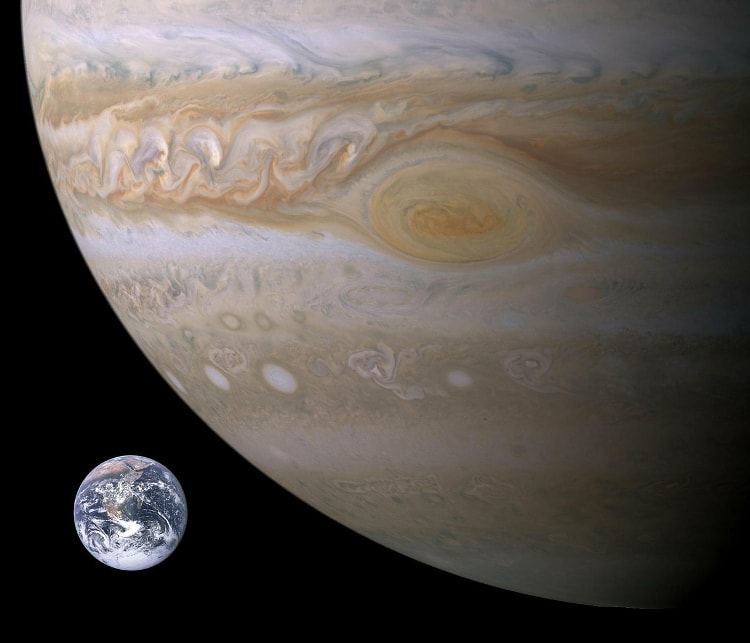


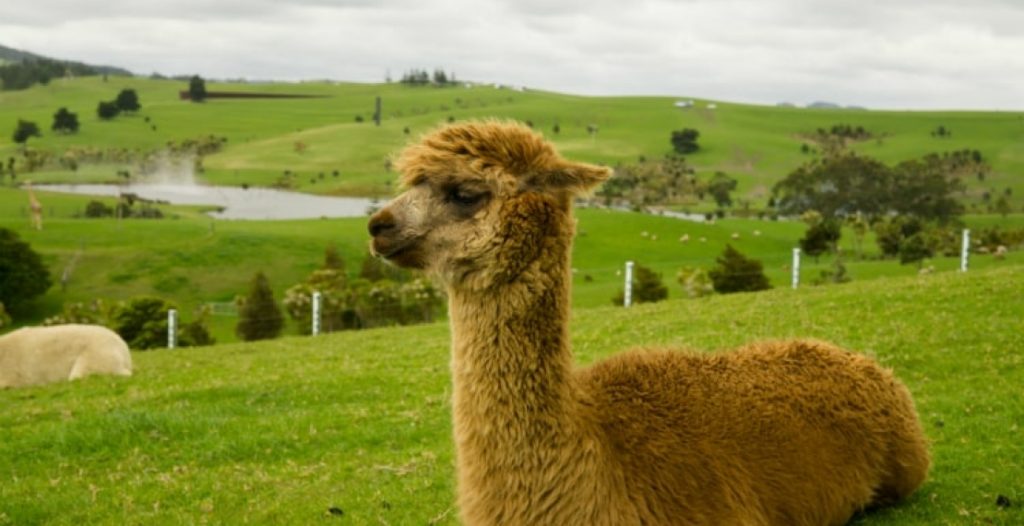

It’s a shame you don’t have a donate button! I’d certainly donate to this outstanding blog! I suppose for now i’ll settle for book-marking and adding your RSS feed to my Google account. I look forward to new updates and will talk about this blog with my Facebook group. Talk soon!